Меню
Social networks
Sections
Feb. 7, 2025, 7:36 a.m.
The Rise and Fall of Genoese Trade in the Danube-Dniester Area
Цей матеріал також доступний українською493
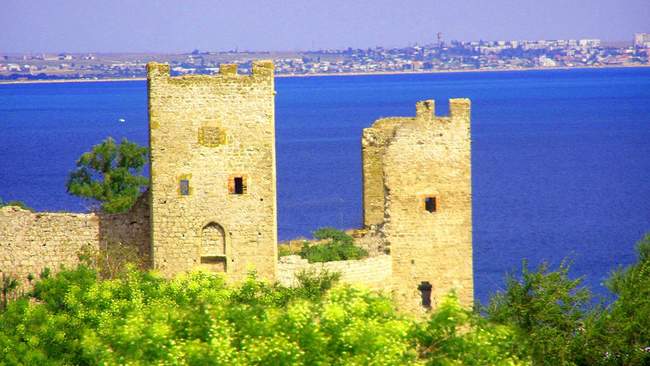
Genoese fortress. Photo: Wikipedia
After the Golden Horde captured the Dniester-Danube lands in 1242, the trade system of Galicia-Volhynia was destroyed. The Golden Horde tried to revive trade ties. This desire was taken advantage of by traders from Genoa, who saw the Northern Black Sea region as a base for supplying cattle, grain, and slaves to Byzantium, Egypt, and Italian cities.
The first attempt by the Italians to gain a foothold in the Black Sea ports is recorded in 1169. However, the Byzantines quickly drove out unwanted competitors. Therefore, it was only in 1266 that Genoa agreed with Khan Mangu to establish a trading settlement in the Crimea, which later became Kafa.
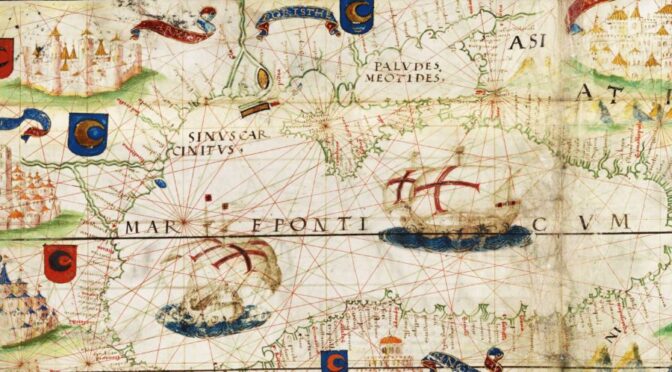
Portolan of the Northern Black Sea coast. Image: mangup.su
Portolan or portolan (Italian: portolano - "locus") are highly accurate medieval navigational nautical charts. They were produced for their intended purpose during the XIV-XVII centuries, mainly on parchment. The main feature of these charts is a detailed and realistic drawing of the coastline with navigational hazards (rocks, pitfalls, shoals) and place names written perpendicular to the coast, a network of rhumb lines and a linear scale.
As early as the 1290s, the Genoese established themselves in the Dniester region. A notarial deed in the city of Caffa mentions the allocation of a loan of 800 silver coins (aspers) for the purchase of goods in Malvocastro (Moncastro), which was located on the site of modern Bilhorod-Dnistrovskyi. The city itself is marked on a navigational nautical chart of 1321 as a Tatar city with the tamga (symbol of power) of the Dzhuchi ulus. First of all, they bought wheat from Podillia, which was as good as wheat from Kafa, but cheaper.
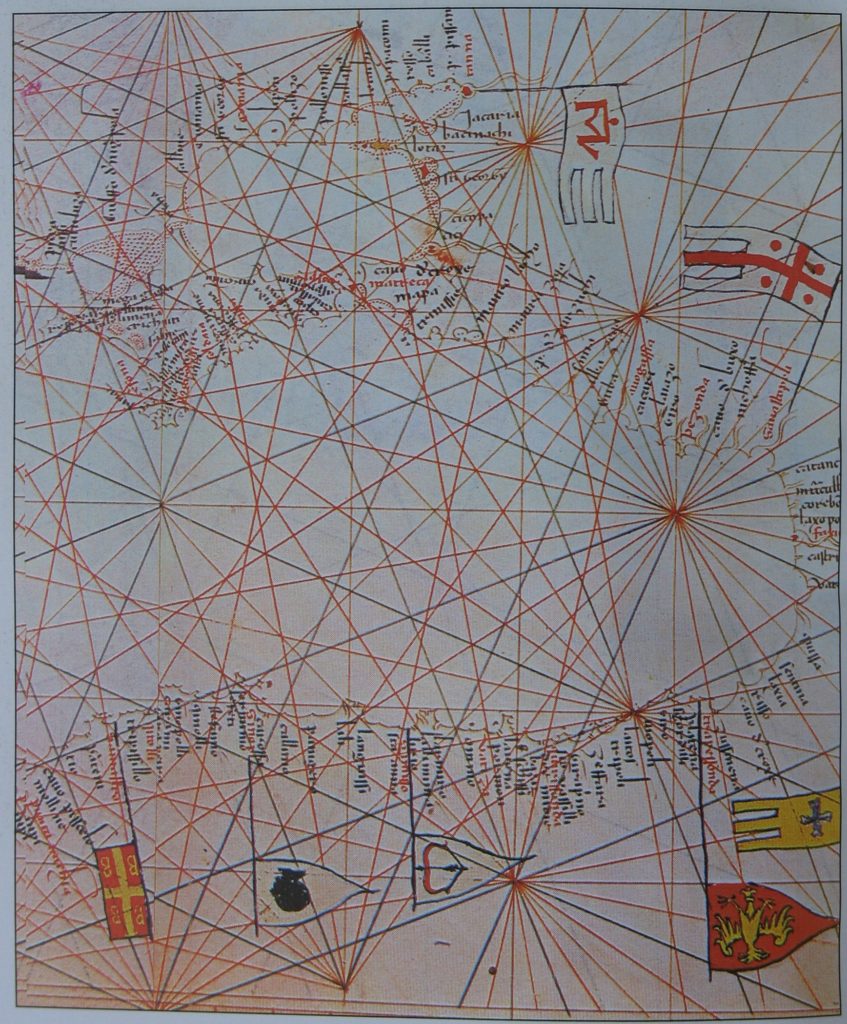
Portolan Visconti 1321 (fragment). Image: mangup.su
The presence of the Genoese in the Danube region is also confirmed by the late 13th-century portolan "Il Compaso di Navigare". Of all the ports mentioned in the portolan, Vicina on the Lower Danube is thoroughly characterized. One of the acts of 1298 mentions the Genoese consul in Vicino, Montano Embriaco.
Gradually, along with Moncastro and Vicino, the role of Licostomo (modern Kilia) in Italian trade grew. Likely, Licostomo became for some time a military guarantor of stable Genoese trade on the Danube.
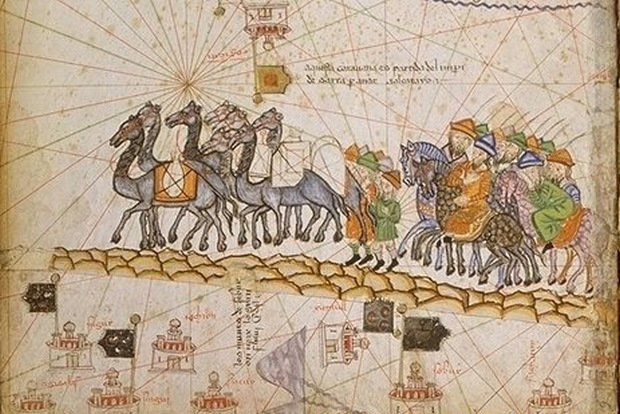
The Tatar trade route. Image: islam.in.ua
Another factor in the flourishing of trade was its gradual transformation from the Tatar route to the Moldavian route.
In the 1360s and 1370s, the Danube-Dniester lands came under the rule of the Moldavian principality. Moldovan peasant law spread in the region, which secured the status of landowners free from the boyars. In the steppe region, Moldovans coexisted quite peacefully with the Tatars. In fact, the local peoples differentiated their economic specialization: Moldovans and Slavs were engaged in agriculture, including wheat growing and winemaking; Tatars specialized in distilling and millet cultivation; Genoese, Jews, and Armenians were engaged in trade.
The Golden Horde actively supported the involvement of European and Moldovan merchants to overcome the Italian monopoly. In 1379, Khan Muhammad granted the right to trade in the horde to merchants of Lviv, and in 1380 to Krakow.
In 1387, a number of important agreements were signed that promoted trade. On September 26, an agreement was signed on Moldavia 's dependence on Poland, which allowed Lviv and Krakow merchants to get involved in supplying cattle to the Tatars in the Black Sea steppe.
In the same year, Genoese merchants signed a trade agreement with Bulgarian Prince Januk. The agreement provided for the establishment of a trade route between Kafa, the Danube port of Kiliya, and Bulgarian Varna. Moreover, the cost of import and export duties was not to exceed 1%. Gold and jewelry were generally exempt from taxation. The duty did not change even in years of poor harvests, when the cost of grain increased significantly. A fine of 100 thousand silver coins was clearly prescribed for violation of this agreement.
The growth of trade contributed to the reduction of tax obstacles. In 1391, merchants from Krakow and Lviv were exempted from paying customs duties on Moldovan trade. In 1402, Armenian merchants from Lviv received a monopoly right to trade with Moldova, and in 1408-1409, merchants from Galicia, Krakow, and Transylvania received trade privileges from the Moldovan master Alexander the Good.
Such generosity was explained by the huge excess profits of Moldova from trade. Back in 1388, when the Moldavian Road had not yet become a major trade route, the Moldavian Lord (Prince) Peter I Mushat granted a loan to Władysław II Jagiełło in the amount of 3000 Frisian carbons (about 538.5 kilograms of silver). Poland repaid this loan for several decades.
For Moldova, this amount was not astronomical. The sale of cattle and grain via the Moldovan route annually brought in more than 1,000 Frisian carbons in silver. Even after the decline of this transit route in the 1450s, Moldova, with a population of 180,000, received up to 50,000 ducats in gold.
Only the turnover of Ottoman-Polish trade in the late fifteenth century, when the Moldavian route finally collapsed, amounted to 200,000 ducats in gold, of which 20,000 ducats were received by Moldova in customs duties and the cost of protecting goods.
The legal delimitation of the influence of the states on the Moldavian Road took place in the city of Liubovna in March 1412. Polish King Władysław II Jagiełło and Hungarian King Sigismund divided the spheres of influence: Jassy, Bilhorod, or Moncastro with the Dniester transit of wheat fell under the Polish sphere of interest. The Danube branch (Kilia, Vicino, Berlad), which provided transit of goods to the Balkans, was controlled by Hungary.
Thanks to this agreement, the main trade routes were formed:
- The Saratov trade - from there, Budzac cattle were driven across the Danube;
- The Wallachian trade brought fabrics and luxury goods from Byzantium, Wallachia, and Bulgaria, and exported furs, grain, weapons, and Tatar prisoners to Europe;
- The Kiliatrade - the supply of agricultural products, fish, wax, and honey via the Danube to Hungary and Western Europe;
- "Via tartarica, or the Tatar Way, connected Moncastro with the Dzhuchi ulus and the Volga Tatars.
All of these trade centers were part of the so-called Moldavian trade route, through which Galician, Polish, and Lithuanian merchants carried out international trade with Byzantium and Bulgaria. According to Genoese sources, pepper, ginger, cloves, cinnamon, rice, sugar, cotton, and lemons were brought to Moncastro via Sudak, and soon shipped to Lviv, Krakow, Buda, Suceava, Dubrovnik, Genoa, and Venice.
Weapons, shoes, luxury goods, and wine were brought from Europe to Kilia and Moncastro, which were then exported to the Crimea and the Caucasus. These connections are evidenced by the large number of Iranian and Central Asian ceramics and Chinese porcelain found, particularly in Moncastro.
Trade routes were safe, well-organized, and customs duties were quite low, ranging from 3% to 5% depending on the situation. The safety of the route from Tatar attacks is evidenced by the memoirs of the traveler Ambrogio Contanari in 1473: "To cross the mile-wide Danube, the Tatars cut down trees for us, made rafts out of them, and put equipment and goods on top of them." Indeed, the cost of the tax per cartload of goods was small: from 7.5 money in Lviv to 12 money in Moldova (less than the cost of 100 sheep in Lviv), but the security of transit was stable.
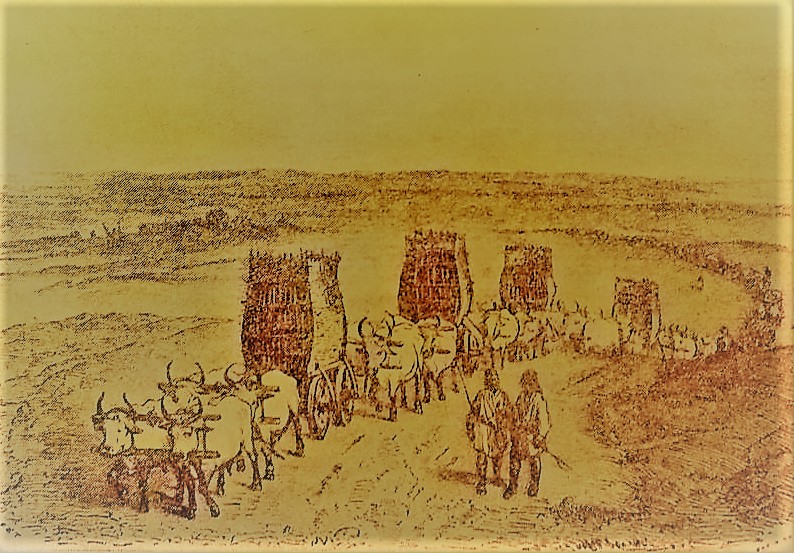
A caravan in Moldova. Image: Wikipedia
In 1408, Moldovan and Lviv merchants bought 100 sheep in Lviv for 10 grosz and sold them to Tatars in Kilia and Moncastro for 60 grosz.
The slave trade continued to bring large profits. In 1379, Genoa and Egyptian Sultan Haji II signed an agreement to supply slaves for the Mamluk guard from the Black Sea steppe (Tatars, Rusyns, and Polovtsians). In 1431, Egypt's Sultan Barsbay agreed with the Italians to buy slaves directly from their Black Sea factories, particularly in Kafa. Not surprisingly, in 1440 alone, 2000 slaves were brought to Egypt from there.
Up to 2000 slaves (Wallachians and Rusyns) were sold annually in Moncastro. According to reports in 1438, more than 30 ships with slaves arrived in Constantinople. From 1367 to 1429 the price of slaves tripled from 23 to 80 ducats. There was a certain specialization of slaves. The Egyptians bought strong men for the military, the Greeks preferred educated captives, and the Italians were interested in farmers.
During the Moldovan rule (second half of the fourteenth to mid-fifteenth century), the Danube-Dniester interfluve became the economic center of the southwestern Black Sea region and a powerful hub for transit trade between Europe and Asia.
The Budzac ports posed a serious competition to the Ottomans, who tried to capture them and incorporate the Moldovan route into their economic system. Since the 1420s, the Ottoman state has been trying to recapture Bujak from the Moldovan principality. In 1484, the Ottoman Porte finally conquered the Danube cities of Kilia and Bilhorod.
During the fighting, their commercial importance was completely destroyed. In particular, after the Ottomans captured Bilhorod, more than 4,000 residents were given into the sultan's forced ownership (devshirme), another 3,000 peasants from the surrounding villages were captured by the Janissaries and Tatars, and the city itself was renamed Ak-Kermen.
Андрій Шевченко











